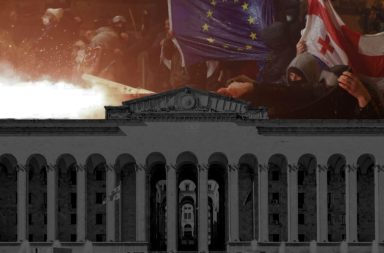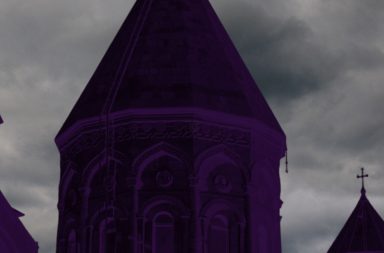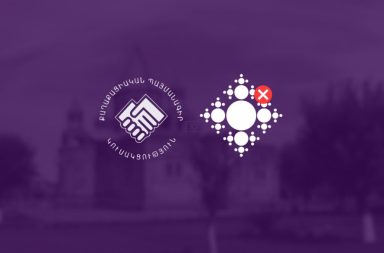A cultural and humanitarian event is taking place in the heart of Switzerland. The Armenian Heritage Conference, held at the Kursaal Bern conference center, brings together participants from numerous countries to protect and celebrate Armenian history, religion, and culture. Organized by the World Council of Churches, with the support of the Protestant Church in Switzerland and strong backing from the Armenian Apostolic Church, the conference highlights the enduring significance of Armenian heritage on the global stage.
The three-day conference includes theologians, lawyers, human rights activists, politicians, historians, religious leaders, and artists—including 301 photojournalist David Ghahramanyan, whose powerful imagery documents the destruction of Armenian sites in Artsakh and underscores the human cost of cultural erasure. Together, these participants seek to turn dialogue into concrete action to defend endangered heritage and displaced communities.
During the opening prayer and remarks, Rev. Rita Famos, president of the Protestant Church in Switzerland, welcomed participants to Bern—the church’s headquarters—and reflected on its longstanding commitment to peace, especially in relation to Armenia and Artsakh (Nagorno-Karabakh). Setting a thoughtful and urgent tone, she prayed: “Let us seek truth so that this conference bears good fruit and we can, according to our conscience, do what we must do.” She emphasized that this is not just a gathering for reflection but one that must lead to action: “All participants and speakers at this conference are called upon to consider what they can contribute.”
The conference is held under the theme “Freedom of Religion | Preservation of the Armenian Religious, Cultural, and Historical Heritage in Artsakh/Nagorno-Karabakh,” and spans three days—from Monday to Wednesday—bringing together theologians, lawyers, human rights activists, politicians, historians, and religious leaders from various backgrounds. The gathering is more than academic—it is a call to protect a living heritage.
One of the most powerful and emotional highlights of the event is the keynote speech delivered by His Holiness Karekin II, Supreme Patriarch and Catholicos of All Armenians. Reflecting on the widespread destruction of Armenian churches and sacred sites in Artsakh and beyond, he declared: “We are called to seek ways to prevent the further appropriation and destruction of sacred sites. We are witnessing condemnable violations of religious freedom and fundamental human rights.” His Holiness condemned the ongoing disregard for international calls to preserve these sites, stating: “They have also rejected UNESCO’s initiative to conduct a fact-finding mission to assess the condition of cultural monuments in Artsakh.”
He drew historical parallels to other acts of cultural genocide in Iran, Syria, and Afghanistan, underscoring that the destruction of cultural heritage is not only a crime against one nation but against all humanity: “The destruction of cultural heritage must rightly be seen not only as a crime against a single nation but a crime against all of humanity.”
In a recorded message, His Holiness Aram I, Catholicos of the Great House of Cilicia, echoed these concerns and went further, describing the situation in Artsakh as an act of genocide. He reminded the audience of the human core of this issue: “You are convened not simply to examine the fate of religio-cultural monuments of Artsakh and seek the most effective ways and means of protecting them; you are gathered here because a whole people has been uprooted from its centuries-old land.” Calling for justice, he urged the international community not to remain silent: “The faith communities and the actors of civil society should speak out boldly in defense of justice and fundamental human rights, and the people of good faith should strongly challenge the prevailing notion that ‘might is right.’”
The conference also spotlighted the targeted destruction of Armenian churches, cemeteries, and monuments. Participants studied satellite images from Caucasus Heritage Watch, offering undeniable visual evidence of the scale of cultural devastation.
Playing a key role in documenting this loss is 301 photojournalist David Ghahramanyan, whose personal testimony and photographic panels brought the crisis into sharp human focus. Through powerful images and firsthand accounts, Ghahramanyan vividly illustrated the destruction and the human toll behind the headlines. His work gave voice to those uprooted and bore witness to endangered cultural sites, reminding participants that what is at stake is not just history, but identity and survival.
The damage inflicted on Armenian heritage is understood as a deep wound to all of humanity. Described as cultural vandalism and ethnic cleansing, the erasure of centuries-old monuments is not just a national tragedy—it’s a global emergency. Preserving what remains is vital to the Armenian people’s sense of identity and to the world’s collective memory.
A central goal of the conference is to galvanize international support. Participants have developed proposals for action, including a renewed push for UNESCO to send an independent fact-finding mission to Artsakh. There is hope that such an initiative can document the destruction, promote accountability, and prevent further loss.
The conference will conclude with the adoption of the Bern Declaration, a joint statement that calls for urgent protection of Armenian cultural heritage and defends the principle of religious freedom. This declaration is expected to serve as a powerful statement of solidarity and a guide for international advocacy moving forward.
As the Armenian Heritage Conference nears its end, it has become clear that this is more than a forum for discussion—it is a collective stand against erasure. Through the words of spiritual leaders like Karekin II, the visual witness of David Ghahramanyan, and the unified voices of activists, clergy, and scholars, the conference is a declaration that Armenian culture and memory will not be forgotten. Held far from the homeland, this gathering in Bern sends a powerful message: with unity and international cooperation, the rich heritage of the Armenian people can—and must—be preserved for future generations.


